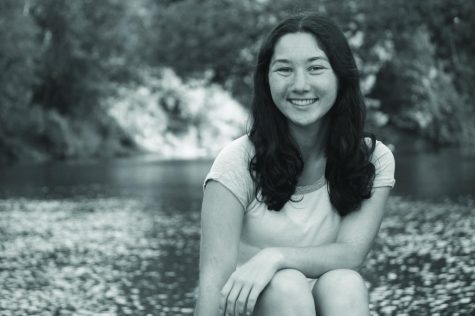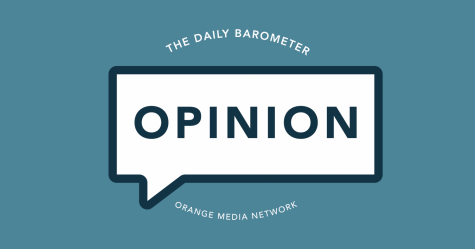Letter from the Editor: We cannot celebrate 125 years of The Baro without addressing its oppressive past
March 1, 2021
I feel privileged to be in the position I am in during such a big milestone for The Daily Barometer. While I am incredibly proud of the paper I am leading today and the great strides we have made to become a more diverse and inclusive paper within the last decade, I cannot deny the problematic past of The Barometer, a past that I am not proud of.
It is widely known that news media, whether it is at the collegiate, local or national level, was and still is predominantly run and operated by white men.
According to a 2018 Pew Research Center analysis of U.S. Census Bureau data, newsroom employees—this includes editors, reporters, photographers, and videographers in the newspaper, broadcasting and internet publishing industries—are more likely to be white and male than U.S. workers overall.
More than 77% of newsroom employees are non-Hispanic white, compared with about 65% of all U.S. workers, according to the 2018 analysis.
“Newsroom employees are also more likely than workers overall to be male,” the analysis said. “About six-in-ten newsroom employees (61%) are men, compared with 53% of all workers. When combining race/ethnicity and gender, almost half (48%) of newsroom employees are non-Hispanic white men compared with about a third (34%) of workers overall.”
According to Pew Research Center’s analysis, there are signs, though, that younger newsroom employees show greater racial, ethnic and gender diversity than their older colleagues. I encourage everyone to read this article by Pew Research in its entirety for more context on diversity in newsrooms across the U.S. in more recent years.
Additionally, the American Society of News Editors’ annual survey of workforce diversity in 2019 showed that digital-only platforms drive race and gender inclusion among newsrooms.
ASNE has counted professional full-time newspaper journalists since it first released the census in 1978. In the 2019 survey, 429 news organizations, including 267 newspapers and 65 online-only news sites participated—the remainder of participating outlets did not specify whether they were a print or online-only publication.
According to the ASNE data, some 30.8% of salaried workers at online-only publications are people of color, a gain of 5% over 2018’s figures, in which people of color comprised 25.6% of journalists employed in newsrooms with no print presence.
As an industry, we are making progress, but it’s really slow progress.
The truth is that when a newsroom is primarily comprised of white male journalists, the pitches, the sources and interview questions and the angles taken are all coming from the perspectives of those writers. While the writing itself may not be wrong, it is likely that it would be written differently if it were written by another journalist, and even more so if that journalist had a different ethnic or gender identity.
Speaking on behalf of The Daily Barometer, we know how important it is to not only uplift diverse voices in our community through our coverage, but to also hire staff members with differing perspectives and unique lived-experiences for these exact reasons. We cannot accurately serve our community without coming from and representing each and every person in our community. We continue to push for elevating diversity and inclusion in our newsroom because news media has a history of leaving out the voices of women, of those with disabilities, of Black, Indigenous and people of color, members of the LGBTQ2+ community—those who have a voice that has historically been silenced and needs to be heard.
I want to highlight the wonderful reporting of Sukhjot Sal, a news contributor for The Baro, who wrote a piece for this print issue about the major developments The Barometer has made throughout its 125-year-lifespan. She touched on The Daily Barometer’s hiring of its first woman editor-in-chief as well as the first person of color hired into the editor-in-chief position. I edited her writing slightly to provide more context—my edits can be seen in brackets. She so eloquently wrote:
According to [Kami Hammerschmith, who was assistant director of Orange Media Network from 1995 to 2016], Pat Glenn, later Pat Hagood, was the first woman editor of the Barometer campus newspaper, selected in 1944.
“She graduated from Oregon State in 1945 in Home Economics Education and served as a reporter and technical writer for the OSU and Washington State University news bureau and with several Washington newspapers,” Hammerschmith said.
[Former Barometer adviser Frank Ragulsky, who worked with the newspaper from 1982 to 2009], also commented on this turning point, explaining that before 1944, women had a 9:30 p.m. curfew and had to report to their dorms at that time.
“The paper was not usually done by 9:30 p.m.,” Ragulsky pointed out. “So the reason it was in 1944 was because most men were fighting in World War II. Too few men working on the Barometer.”
Recent breakthroughs in the Barometer staff—such as the first editor who was a person of color—are more difficult to track.
Public Services Archivist Rachel Lilley, who works in the Special Collections and Archives Research Center at OSU noted that while it’s possible an OSU publication may have specifically mentioned the first person of color serving as editor, the further back in time you go, the less likely it is that this milestone would be discussed or pointed out.
Additionally, Natalia Fernández, SCARC’s interim director and curator of the Oregon Multicultural Archives and Oregon State Queer Archives, explained that this kind of research can be challenging, and in some ways problematic—almost like engaging in racial profiling, unless the researcher has a full name, date range or time period to investigate with.
However, senior faculty research assistant with SCARC, Chris Petersen, provided insight into the matter.
“The first person of color to serve as editor [may have been] Joy Estimada, whom I knew tangentially,” Petersen said. “She was on the [Barometer] staff in the late ’90s and served as editor from ‘98 to ‘99.
I was deeply upset but not surprised by what Sal found in her reporting. The Daily Barometer was founded in 1896. They hired their first female head editor in 1944—it took 48 years and a war. The Barometer selected the first person of color as their head editor in 1998—it took 102 years.
I recognize and acknowledge the way this newspaper has upheld systems of oppression in the past. I could not, in good faith, celebrate The Daily Barometer’s history without addressing our problematic past. Each academic year there is a new editor-in-chief, editorial staff and a mixture of new and returning contributing staff, which means we all must continually make an effort to educate ourselves on the undeniable systemic injustice ingrained in our industry and in the history of our very own Oregon State University student-run newspaper, that way we can work to be a better newspaper and workplace than the year prior.
It’s incredible that The Barometer has survived this long. We are still here and we have made tremendous strides to be a better newspaper than we were 125 years ago, and continue to grow every day. This newspaper’s troubling past has brought us to where we are in this moment, and we can use our knowledge of The Baro’s history to move forward and become a more inclusive, diverse, accessible, honest and accurate newspaper for the OSU and greater Corvallis, Ore. communities.























































































































